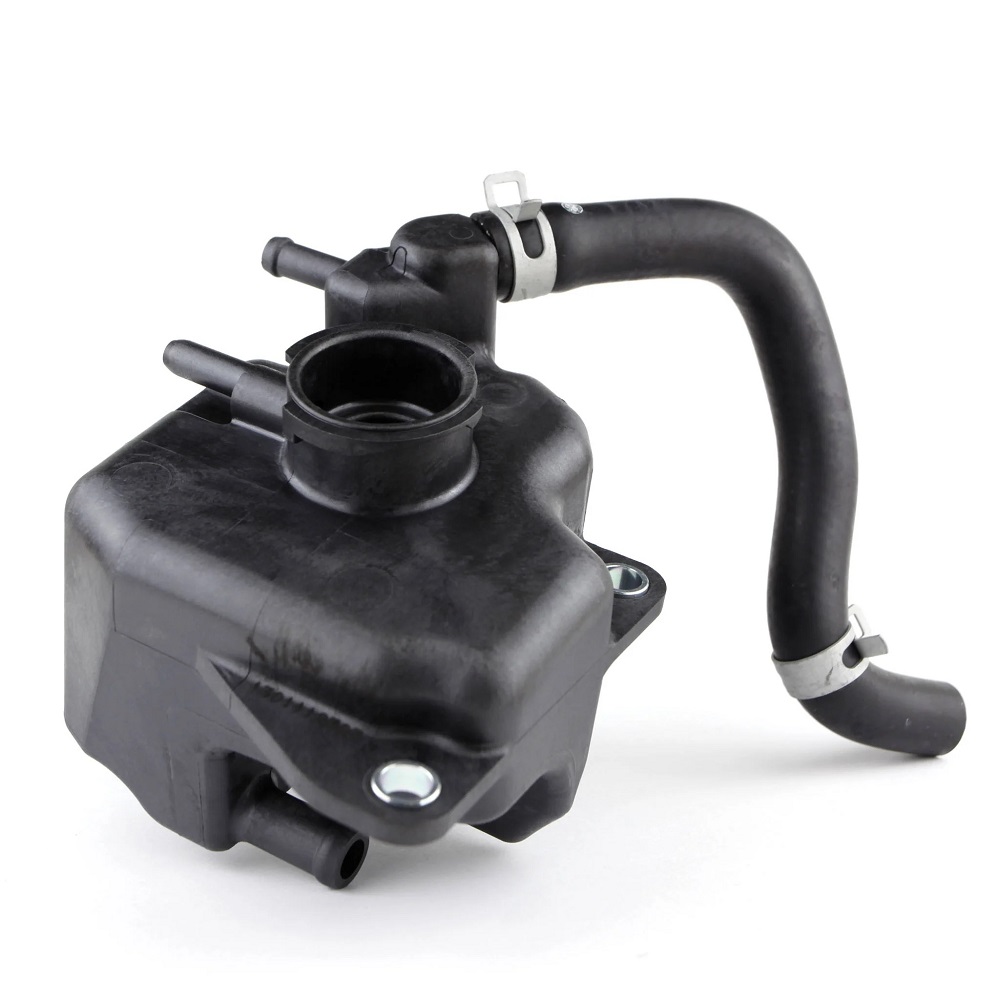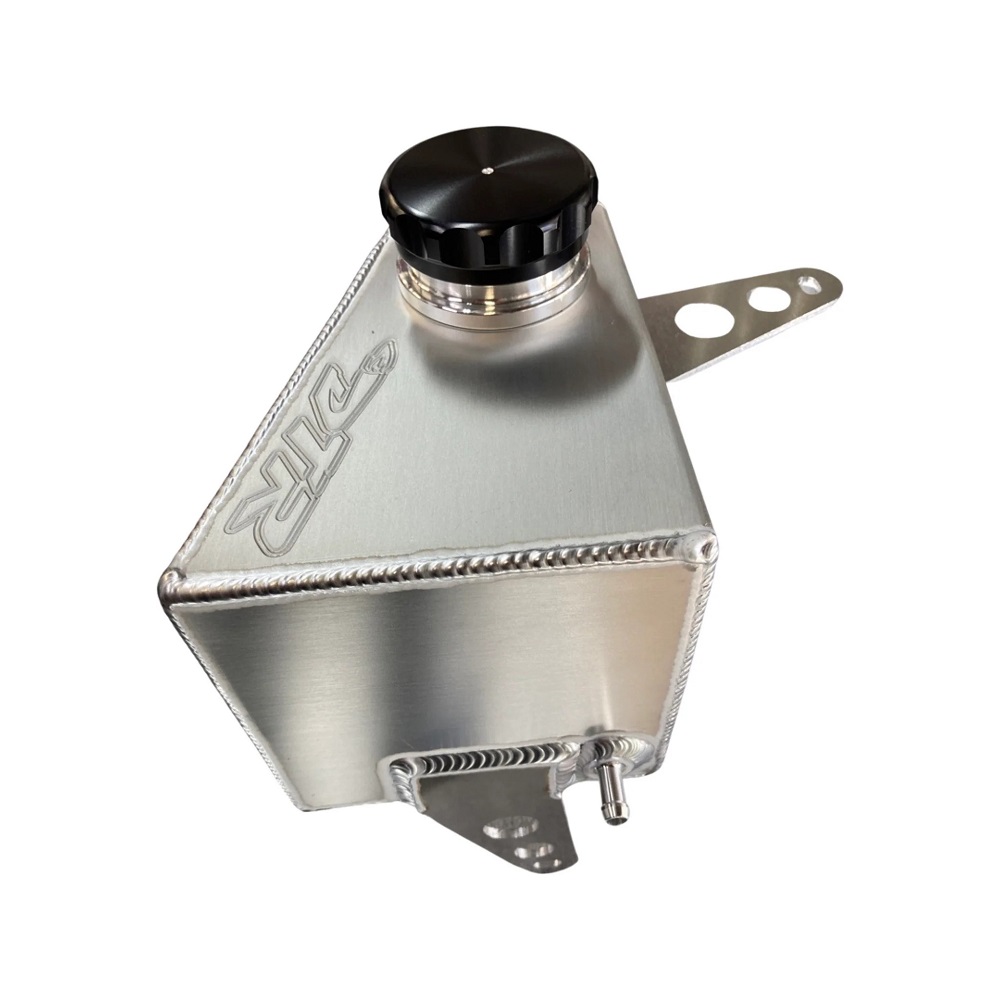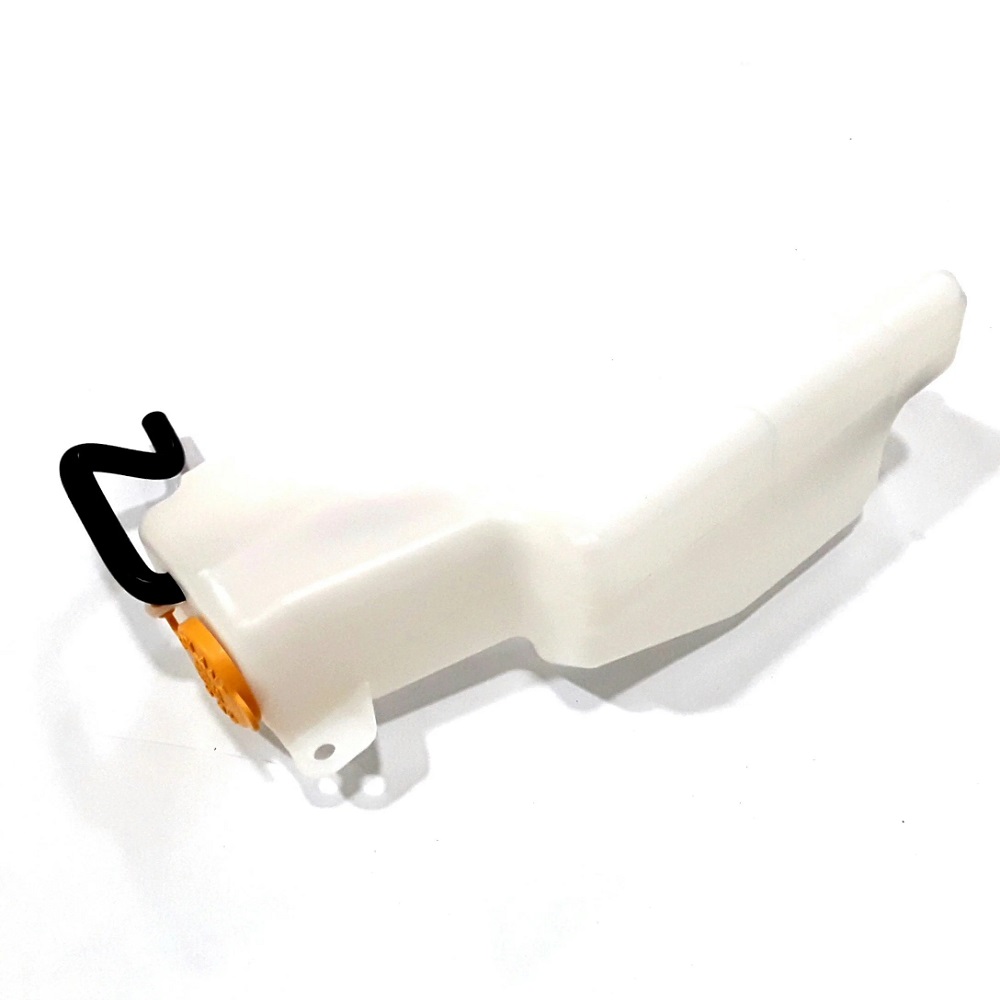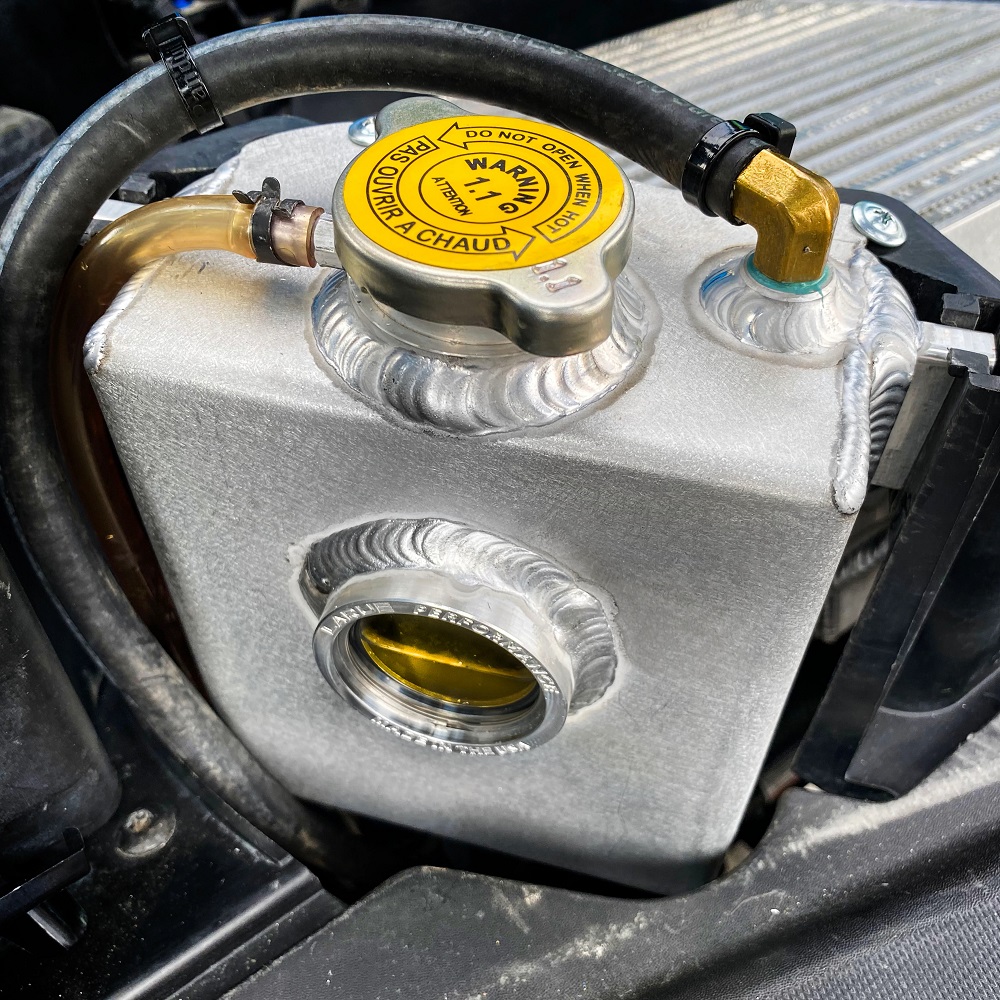What is a Coolant Reservoir Tank?
A coolant reservoir tank is an essential component of a vehicle’s cooling system. It is a storage container that holds excess engine coolant. When the engine heats up, coolant expands and flows into the reservoir tank. As the engine cools down, the coolant is drawn back into the radiator.
Coolant reservoir tanks are typically made from durable materials like plastic or aluminum. They come in various shapes, sizes, and designs to fit different vehicles. Some are built specifically for certain vehicles, while others are universal.
Functions of a Coolant Reservoir Tank
The coolant reservoir tank serves critical functions in ensuring efficient engine performance:
- Storage and Regulation: It stores excess coolant when the engine heats up and ensures it flows back to the radiator when needed.
- Pressure Management: It helps regulate pressure in the cooling system, ensuring it operates safely.
- Coolant Level Monitoring: The tank often has markings to help monitor coolant levels easily.
- Prevents Overheating: By ensuring sufficient coolant is available, it prevents the engine from overheating, which could cause damage.
Importance in Vehicle Cooling Systems
The cooling system keeps the engine temperature within a safe range. The coolant reservoir tank plays a crucial role in this process. Without it, managing the expanding and contracting coolant would be challenging. This tank ensures the cooling system maintains proper function by:
- Maintaining Pressure Balance: It prevents the buildup of excess pressure in the cooling system.
- Protecting the Engine: It prevents engine overheating and costly damages.
- Ensuring Longevity: Proper cooling system function extends engine life and improves vehicle performance.
In essence, a properly working coolant reservoir tank is vital for a healthy engine and efficient vehicle operation.

How Does a Coolant Reservoir Tank Work?
A coolant reservoir tank operates as an integral part of the vehicle’s cooling system. It helps manage coolant circulation to keep the engine temperature in check.
Circulation of Coolant in the System
The coolant reservoir tank is pivotal in the coolant flow cycle:
- Expanding Coolant: When the engine heats up, coolant expands and moves into the reservoir tank.
- Cooling Down: As the engine cools, the coolant contracts and flows back into the radiator.
- Pressure Adjustment: The tank ensures proper pressure balance, allowing smooth coolant movement.
- Consistent Coolant Levels: It stabilizes coolant levels and ensures there’s enough coolant for efficient functioning.
This circulation prevents air pockets in the system, ensuring the coolant works effectively.
Role in Maintaining Optimal Engine Temperature
The coolant reservoir tank plays a crucial role in keeping the engine temperature ideal:
- Heat Management: It ensures the engine doesn’t overheat by providing additional coolant when needed.
- Pressure Control: It regulates pressure, helping the cooling system operate safely.
- Coolant Monitoring: It allows easy observation of coolant levels through markings.
By assisting these processes, the coolant reservoir tank secures engine performance and efficiency. A well-maintained tank is vital for reliable temperature control in your vehicle.

Types of Coolant Reservoir Tanks
Choosing the right coolant reservoir tank is essential for your vehicle’s cooling system. Tanks vary by material and design, impacting durability and compatibility.
Plastic Tanks
Plastic coolant reservoir tanks are the most common type. They are lightweight and cost-effective. Made from durable plastics, these tanks can handle high-pressure coolant flow. They are resistant to corrosion, which extends their lifespan. However, they may crack or leak over time due to heat exposure.
Aluminum Tanks
Aluminum tanks offer superior durability compared to plastic options. They withstand extreme temperatures and pressures effectively. Aluminum is resistant to warping and provides a longer lifespan. However, these tanks are heavier and often more expensive.
Universal vs. Vehicle-Specific Tanks
Universal tanks fit a wide range of vehicle models. They are adjustable and flexible in design. If you own multiple vehicles, universal tanks provide a convenient option. On the other hand, vehicle-specific tanks are custom-made for particular car models. They offer better compatibility and performance. Vehicle-specific tanks are usually easier to install, as they fit perfectly without modifications.
Consider your vehicle type and performance needs before selecting a coolant reservoir tank. Both universal and specific options have their pros and cons. Always prioritize quality and material suitability for long-term reliability.
Signs of a Faulty Reservoir Tank
A faulty coolant reservoir tank can lead to engine performance issues. Detecting issues early can save you expensive repairs. Below are some signs of a faulty coolant reservoir tank to watch for:
Leakage and Cracks
- Visible Leaks: Check for puddles of coolant under your vehicle.
- Cracks: Inspect the tank for cracks or damage, especially on older or plastic tanks.
- Coolant Smell: A sweet smell around your car could indicate a leaking reservoir tank.
- Steaming: Steam near the engine bay may suggest a coolant leak.
Regularly checking for these signs can help you identify problems early and minimize damage.

Overheating Issues
- Temperature Spike: The engine temperature gauge climbing too high indicates cooling system issues.
- Coolant Loss: Frequent low coolant levels may suggest the tank is leaking or failing.
- Boiling Coolant: Bubbling or boiling noises from the reservoir tank could mean it’s overheating.
- Engine Smoking: Overheating can lead to smoke or steam escaping from under the hood.
A faulty coolant reservoir tank may cause the cooling system to fail, so address overheating quickly.
Unusual Coolant Levels
- Low Coolant Levels: Frequent drops in levels without visible leaks indicate internal tank issues.
- Overfilled Tank: A constantly overfilled tank might suggest a pressure problem.
- Dirt in Coolant: Contaminated coolant implies tank contamination or failure.
- Bubbles in Coolant: Air bubbles in the tank signal possible leaks or pressure system faults.
Monitor coolant levels regularly to ensure the tank works effectively and prevents engine damage.
Spotting these signs promptly can help maintain your car’s cooling system. Don’t ignore potential warnings to avoid further engine troubles.
How to Maintain a Reservoir Tank
Proper maintenance of your coolant reservoir tank is essential for efficient engine performance. Regular upkeep ensures your cooling system works smoothly and prevents costly repairs.
Regular Inspection and Cleaning
- Check for Leaks Weekly: Inspect the reservoir tank for visible signs of leaks or cracks. Use a flashlight to check every corner.
- Inspect Connections: Ensure all hoses connected to the tank are secure and free from damage or wear.
- Clean the Tank Regularly: Remove the tank for cleaning if it appears dirty or has sediment buildup. Use warm, soapy water and a soft brush to clean the inside.
- Inspect the Tank for Damage: Look for warping, discoloration, or weak spots that could cause future issues.
- Check Caps and Seals: Ensure the tank cap is tightly closed and the seals are intact. Damaged seals can cause leaks.
Cleaning enhances performance and prolongs the tank’s life. It’s essential to prevent contamination and maintain proper coolant circulation.

Refilling and Checking Coolant Levels
- Monitor Coolant Level: Check the coolant level regularly. Use the markings on the reservoir tank to know if coolant is low or overfilled.
- Add Coolant as Needed: Refill the tank when coolant is below the required level. Avoid overfilling it.
- Use Recommended Coolant: Choose the coolant type specified in your vehicle’s owner manual for the best performance.
- Ensure No Air Pockets: After refilling, ensure there are no air bubbles in the system to avoid uneven heat distribution.
- Change Coolant as Scheduled: Flush the old coolant and add fresh coolant per the manufacturer’s recommended schedule.
- Avoid Contaminants: Keep the tank and openings clean while refilling to prevent debris contamination.
By following these steps, you can keep your coolant reservoir tank functioning efficiently. Regular maintenance is a small effort that guarantees long-term benefits for your vehicle’s cooling system.
Replacement and Installation Guide
Replacing and installing a coolant reservoir tank is vital for maintaining a vehicle’s cooling system. Proper execution ensures efficient engine performance and avoids further damage. Follow these guidelines for optimal results.
When to Replace Your Coolant Reservoir Tank
Knowing when to replace your coolant reservoir tank can save your engine from damage. Here are some signs:
- Constant Leaks: Persistent coolant leaks suggest cracks or damage in the tank structure.
- Warping or Bulging: Heat exposure can cause the tank material to warp or bulge over time.
- Discoloration: A yellow or dark-stained tank may indicate aging or contamination.
- Low Coolant Level Issues: Difficulty maintaining coolant levels might signal a reservoir problem.
- Cracked or Damaged Caps: Faulty caps can lead to pressure loss and warrant replacement.
- Frequent Overheating: A failing tank disrupts coolant flow, resulting in engine overheating.
Don’t wait for major issues to occur. Replace the tank as soon as these signs appear.

Steps to Install a New Tank Properly
Installing a new coolant reservoir tank requires attention to detail. Follow these steps:
- Prepare the Vehicle: Start by parking the car on a flat, stable surface and let it cool.
- Drain the Old Tank: Remove all remaining coolant from the defective tank.
- Disconnect Hoses: Carefully detach hoses connected to the tank without damaging them.
- Remove the Tank: Unscrew the bolts or clips securing the old tank.
- Inspect the System: Check hoses and connections for additional wear or cracks.
- Mount the New Tank: Secure the new tank firmly with bolts or clips.
- Reconnect Hoses: Attach hoses to the new tank, ensuring tight and secure connections.
- Refill Coolant: Add recommended coolant to the tank, following the vehicle manual.
- Check for Leaks: Run the engine to verify smooth coolant circulation and check for leaks.
Follow manufacturer instructions for best results. Take precautions to avoid contamination while refilling.
Replacing and installing the coolant reservoir tank ensures the cooling system works efficiently. Proper maintenance reduces risks of engine damage and prolongs vehicle life. Regular replacement is an investment in your vehicle’s healthy operation.
Common Problems and Troubleshooting
Coolant reservoir tanks require periodic attention to avoid mechanical issues. Without proper maintenance, problems can arise, impacting your engine’s efficiency. Here are common issues and troubleshooting steps.
Identifying Leaks
Leaks are one of the most frequent issues with coolant reservoir tanks. Detecting them early can prevent engine damage.
- Check for Visible Puddles: Look for coolant pools under the vehicle. This often indicates a leak.
- Inspect the Tank Exterior: Examine the reservoir for visible cracks, holes, or discolorations.
- Examine Hoses and Connections: Loose or worn-out hoses can cause leaks. Check for wear and secure them properly.
- Observe Coolant Level Drops: Frequent lowering of coolant without a clear cause may suggest an internal leak.
- Coolant Odor in the Cabin: A sweet smell in your car could indicate a leak in the reservoir or connections.
- Overheating Symptoms: If the engine overheats, a leak may have caused low coolant levels.
If you identify a leak, it’s crucial to repair or replace the tank immediately. Patch temporary cracks or consult a mechanic for a permanent solution.
Preventing Overpressure in the Tank
Excess pressure in the coolant reservoir tank can cause serious problems. The following tips can help prevent overpressure:
- Check the Radiator Cap: Ensure the radiator cap works properly. Replace it if it’s damaged or doesn’t seal tightly.
- Inspect Coolant Levels Regularly: Avoid overfilling the tank, as it can lead to pressure issues.
- Monitor for Blockages: Check for debris or build-up in the cooling system that may restrict fluid flow.
- Examine the Thermostat: A failing thermostat can cause coolant to overheat and increase pressure.
- Ensure Proper Ventilation: The cap should allow the release of excess pressure to maintain balance.
- Maintain Coolant Quality: Replace old or contaminated coolant according to the manufacturer’s schedule.
By addressing these issues promptly, you can ensure the efficiency and reliability of your coolant reservoir tank. Regular maintenance is key to preventing breakdowns and costly repairs. Proper handling and timely repairs significantly enhance your engine’s lifespan.

Choosing the Right Coolant Reservoir Tank
Selecting the right coolant reservoir tank is crucial for your vehicle’s optimal performance. Various factors and options can impact your decision, ensuring the tank meets your car’s specific needs and enhances its efficiency.
Factors to Consider
Consider these key factors before purchasing a coolant reservoir tank:
- Compatibility: Ensure the tank fits your vehicle’s make and model. Double-check dimensions and mounting points.
- Material: Decide between plastic or aluminum based on your budget and usage requirements.
- Plastic Tanks: Lightweight, cost-effective, and resistant to corrosion but may crack under extreme heat.
- Aluminum Tanks: Durable and withstand high heat and pressure but are heavier and pricier.
- Capacity: Confirm the tank has the correct capacity for your vehicle’s cooling system requirements.
- Quality Standards: Choose products made with durable materials and reliable design for long-term usage.
- Manufacturer Recommendations: Always follow your car manufacturer’s guidelines when selecting a tank.
- Budget: Balance cost and quality. While affordability is essential, prioritize performance and reliability.
- Universal vs. Vehicle-Specific: Decide whether you need a universal tank (more flexible) or a vehicle-specific one (tailored fit).
Recommended Brands and Models
High-quality coolant reservoir tanks ensure reliability and durability. Here are some recommended brands:
- Dorman: Renowned for durable and innovative designs at competitive prices.
- ACDelco: Offers a wide range of reliable, OE-compliant tanks for various vehicle models.
- Mishimoto: Specializes in premium-quality aluminum tanks, designed for high performance and endurance.
- Spectra Premium: Popular for manufacturing high-quality, vehicle-specific reservoir tanks.
- OEM Brands: Trusted original equipment manufacturers (OEM) ensure perfect compatibility and performance.
- Mopar: Ideal for Chrysler, Dodge, Jeep, and Ram vehicles, guaranteeing a precise fit and efficiency.
Research user reviews and expert opinions to find the best-rated model for your needs. Consult a trusted mechanic if necessary to ensure your choice is optimal for your cooling system.
Choosing the right coolant reservoir tank improves your car’s cooling system, extends engine life, and boosts efficiency. Invest in a high-quality, compatible tank for long-term reliability.

Leave a Reply